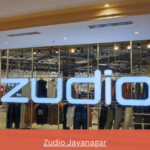In the ever-evolving world of industry, two powerful technologies are coming together to create a harmonious revolution. The Internet of Things (IIOT) and Artificial Intelligence (AI) are like a symphony orchestra, working in perfect synergy to transform industrial landscapes in ways we never thought possible. Join us as we explore how these dynamic duo is reshaping the future of manufacturing, production, and beyond. Let’s dive into the incredible capabilities and endless possibilities of IIOT and AI: The Synergistic Symphony Transforming Industrial Landscapes – the transformative force that is propelling industries into a new era of efficiency, accuracy, and innovation.
Understanding IIOT and AI: The Synergistic Symphony Transforming Industrial Landscapes
The Industrial Internet of Things (IIoT) has gained significant attention and traction in recent years as it continues to revolutionize the industrial landscape. It is a network of connected devices, sensors, and machines that collect and exchange data to help organizations make informed decisions, optimize processes, and improve efficiency.
At its core, IIoT is all about connecting machines and systems seamlessly through the use of internet-enabled devices. This allows for real-time monitoring, analysis, and control of industrial processes from anywhere at any time. The backbone of this connectivity lies in the interconnection between different devices, systems, and networks that enable them to communicate with each other.
One key aspect of IIoT is its ability to gather massive amounts of data from various sources within an organization’s operations. This data can come from sensors on production equipment or even employee wearable technology. With the help of advanced analytics tools powered by Artificial Intelligence (AI), this data can be analyzed in real-time to provide actionable insights for decision making.
This interconnected web of devices also enables predictive maintenance, where sensors can detect anomalies and malfunctions in machinery before they occur. This helps organizations save time and resources by addressing potential issues before they escalate into costly breakdowns.
In addition to improving operational efficiency, IIoT also plays a crucial role in enhancing workplace safety. Real-time monitoring through connected sensors can identify potential hazards or accidents before they happen. Furthermore, wearable technology equipped with biometric sensors can track the health conditions of workers in hazardous environments while providing critical information for emergency response teams.
Moreover, IIOT and AI: The Synergistic Symphony Transforming Industrial Landscapes allows for seamless communication between different departments within an organization. For instance, production data collected through IoT devices can be shared with supply chain management teams in real-time. This facilitates better coordination between departments and helps streamline processes throughout the entire value chain.
Furthermore, IIoT has also paved the way for smart factories – fully automated facilities where machines communicate with each other and make decisions without human intervention. This level of automation not only increases efficiency but also reduces the risk of errors and accidents caused by human factors.
IIoT serves as the backbone of industrial connectivity, enabling organizations to achieve higher levels of productivity, efficiency, safety, and innovation. As technology continues to advance and more devices become connected, the potential for IIoT in transforming industrial landscapes is limitless.
Read More: Demystifying SAST, DAST, IAST, and RASP
The Components of the IIoT Ecosystem
The Industrial Internet of Things (IIoT) is a rapidly growing network of interconnected devices, machines, and sensors that are revolutionizing various industries. At the core of IIoT lies the concept of an ecosystem, where different components work together to create a seamless and efficient system. In this section, we will delve deeper into understanding the components that make up the IIoT ecosystem.
- Sensors and Devices:
Sensors are at the heart of IIoT as they collect data from physical objects such as machines and equipment. These sensors can measure various parameters like temperature, pressure, humidity, vibration, etc., depending on their purpose. They then transmit this data to other devices or systems using wireless or wired communication protocols. - Communication Networks:
Communication networks act as a bridge between sensors/devices and other parts of the IIoT ecosystem. These networks can be wired (such as Ethernet) or wireless (such as Wi-Fi or Bluetooth). They enable real-time communication between different components and facilitate the transfer of large amounts of data to central servers for analysis. - Edge Computing:
Edge computing involves processing data near its source instead of sending it to a centralized server for analysis. This reduces latency and enables faster decision-making in time-sensitive applications like industrial automation. Edge computing also helps in reducing bandwidth usage by filtering out irrelevant data before transmitting it to cloud storage. - Forecasting/Analytics Software:
Once data is collected through sensors and processed via edge computing, it needs to be analyzed for insights that can improve operations or optimize processes in an industrial setting. Forecasting/analytics software uses algorithms based on artificial intelligence (AI) techniques like machine learning to identify patterns in data streams from various sources. - Cloud Infrastructure:
Cloud infrastructure provides scalable storage solutions for vast amounts of sensor-generated data from multiple sources across geographies. It allows organizations to store historical data that can be used for predictive maintenance purposes along with real-time analytics. - Enterprise Software:
Enterprise software acts as a central platform for managing and monitoring all the connected devices, sensors, and systems in an industrial setting. This software provides real-time updates on equipment status, performance metrics, and alerts for potential issues or failures. - Cybersecurity:
The interconnected nature of IIoT devices poses a significant security risk to industrial operations. Therefore, cybersecurity is an essential component of the IIoT ecosystem. It includes measures like encryption, authentication protocols, firewalls, etc., to protect against cyber threats.
These components work in harmony to create a powerful IIOT and AI: The Synergistic Symphony Transforming Industrial Landscapes ecosystem that enables smarter decision-making processes in industries. As technology advances and more devices get connected to the network, we can expect further developments that will continue to transform industrial landscapes for the better.
AI in the Industrial Arena: Elevating Intelligence
The use of Artificial Intelligence (AI) in the industrial sector has been on the rise, and it is transforming the way businesses operate. The combination of AI with Industrial Internet of Things (IIOT) has created a synergistic effect, elevating intelligence in the industrial arena.
One of the main areas where AI is making a significant impact is in predictive maintenance. With IIOT sensors collecting vast amounts of data from equipment and machines, AI algorithms can analyze this data to predict potential failures before they occur. This not only saves time and money by avoiding costly breakdowns but also increases overall efficiency and productivity.
Moreover, through machine learning, AI systems can continuously improve their predictions over time by learning from past data. This means that as more data is collected, the accuracy and effectiveness of these predictive maintenance systems will only increase.
In addition to predictive maintenance, another crucial aspect where AI is enhancing intelligence in the industrial space is through autonomous decision-making. With algorithms capable of analyzing complex data sets at lightning speed, they can make decisions faster than humans ever could. This allows for real-time adjustments to be made based on changing conditions, leading to optimized processes and operations.
Furthermore, AI-powered robots are now being used to automate repetitive and dangerous tasks in factories and warehouses. These robots are equipped with sensors that allow them to navigate their surroundings without human intervention while completing tasks accurately and efficiently. This not only reduces human error but also frees up human workers for more skilled tasks.
The use of AI also extends beyond traditional manufacturing industries into other sectors such as logistics and supply chain management. Through intelligent optimization algorithms, companies can streamline their supply chain processes by predicting demand patterns, optimizing inventory levels, and minimizing transportation costs.
Another area where AI is revolutionizing industrial landscapes is quality control. By utilizing computer vision technology powered by AI algorithms, companies can now detect defects or irregularities in products with higher accuracy than manual inspections conducted by humans.
The use of AI in the industrial sector is also leading to better energy management and sustainability. By analyzing data from IIOT sensors, AI systems can identify patterns and trends in energy consumption and make adjustments to optimize energy usage. This not only reduces costs but also contributes to a more sustainable future.
The integration of AI with IIOT has elevated intelligence in the industrial arena, revolutionizing processes, operations, and decision-making. As technology continues to advance, we can expect even more innovative ways in which AI will transform the industrial landscape for years to come.
The Roles of AI in IIoT Integration
The integration of Artificial Intelligence (AI) and Industrial Internet of Things (IIoT) has brought about a synergistic transformation in the industrial landscape. Both technologies complement each other and play crucial roles in shaping the future of industries. In this section, we will explore the different roles AI plays in IIoT integration.
- Data Collection and Analysis:
One of the primary functions of IIoT is to collect data from various sensors, machines, and devices. However, with a vast amount of data being generated every second, it becomes challenging to process and analyze it effectively. This is where AI comes into play. By using advanced algorithms, AI can quickly sift through large amounts of data and identify patterns or anomalies that humans may miss. This enables more accurate and efficient decision-making by providing real-time insights into the functioning of industrial equipment. - Predictive Maintenance:
Unplanned downtime due to equipment failure can cost industries millions of dollars annually. With IIoT sensors continuously collecting data on machine performance, AI algorithms can predict when a piece of equipment is likely to fail and alert operators beforehand so that preventive maintenance can be carried out proactively. This not only saves time and money but also prevents potential safety hazards. - Optimization:
Through continuous monitoring and analysis, AI can optimize processes by identifying inefficiencies or areas for improvement in real-time. For instance, by analyzing energy consumption patterns, AI algorithms can suggest ways to reduce energy usage without compromising on productivity levels. - Quality Control:
In manufacturing industries, maintaining quality control is crucial for customer satisfaction as well as regulatory compliance. With IIoT sensors tracking production processes at every stage, AI-driven quality control systems can detect defects or deviations from standard parameters early on and take corrective measures before they become costly issues. - Machine Learning:
The ability to learn from data sets without explicit programming makes machine learning an essential aspect of AI in IIoT integration.
By analyzing historical data and identifying patterns, AI can continuously improve processes, making them more efficient and accurate over time. This also helps in predicting future trends and adapting to changing market conditions.
The integration of AI with IIoT is revolutionizing industries by providing real-time insights, optimizing processes, improving efficiency, ensuring quality control, and enabling predictive maintenance. With these roles in play, it is clear that AI is a crucial component in transforming industrial landscapes into smarter and more efficient ecosystems.
The Synergistic Symphony: IIoT and AI in Collaboration
The marriage of Industrial Internet of Things (IIoT) and Artificial Intelligence (AI) has created a powerful union that is transforming the industrial landscape. These two technologies are working together to enhance efficiency, productivity, and innovation in various industries, creating a synergistic symphony that is revolutionizing the way businesses operate.
At its core, IIOT and AI: The Synergistic Symphony Transforming Industrial Landscapes refers to the network of interconnected devices, sensors, machines, and systems within an industrial setting. This technology enables real-time data collection and analysis, providing valuable insights into operations and performance. On the other hand, AI involves the simulation of human intelligence processes by machines through algorithms and data analytics. The combination of these two technologies has unlocked new possibilities for industries across various sectors.
One significant benefit of this collaboration is enhanced predictive maintenance capabilities. With IIoT sensors collecting vast amounts of data from equipment and AI algorithms analyzing it in real-time, potential equipment failures can be predicted before they even occur. This allows for proactive maintenance measures to be taken, reducing downtime and saving businesses significant costs.
Moreover, IIoT-enabled devices provide an abundance of data that can be fed into AI systems to improve decision-making processes. By utilizing machine learning techniques on this data, AI algorithms can identify patterns, trends, and anomalies in production processes that humans may have missed. This leads to optimized operations with minimal errors or quality issues.
Another area where IIoT and AI are making a considerable impact is in supply chain management. The integration of these technologies allows for better tracking and monitoring of goods throughout their journey from supplier to consumer. This ensures greater transparency in supply chain processes while also enhancing operational efficiency.
Furthermore, the combination of IIoT and AI has enabled the development of smart factories or Industry 4.0 – highly automated facilities where machines communicate with each other without human intervention. This improves production speed while also reducing errors caused by human factors.
The collaborative efforts between IIoT and AI are transforming the industrial landscape by revolutionizing traditional practices. This synergistic symphony is enhancing efficiency, accuracy, and innovation in various industries, making businesses more competitive in today’s fast-paced market. With continuous advancements in both technologies, we can expect to see even more significant transformations in the industrial sector in the years to come.
Predictive Maintenance as a Testament to Synergy
Predictive maintenance is a revolutionary concept in the industrial sector that is transforming traditional maintenance practices and driving significant improvements in equipment reliability, safety, and cost-effectiveness. It involves using advanced technologies such as artificial intelligence (AI) and data analytics to gather real-time data from sensors installed on industrial equipment. This data is then analyzed to predict potential failures or inefficiencies before they occur, allowing for proactive maintenance actions to be taken. This synergistic approach of combining IIOT and AI has proven to be highly beneficial for industries across various sectors.
One of the key benefits of predictive maintenance is its ability to minimize unplanned downtime by identifying potential issues before they cause major breakdowns. In contrast, traditional maintenance practices usually involve scheduled shutdowns or reactive repairs after a failure has occurred. With predictive maintenance, keeping track of equipment health through real-time data analysis enables companies to anticipate when parts will need replacing or when repairs need to be made, reducing the risk of unexpected breakdowns and costly production interruptions.
Moreover, predictive maintenance helps extend the lifespan of industrial equipment by identifying early signs of wear and tear that would otherwise go unnoticed until a major failure occurs. By detecting these issues ahead of time, companies can schedule repairs or replacements during planned downtimes instead of waiting for an emergency situation. This not only saves time but also reduces repair costs and ensures uninterrupted operations without compromising quality.
In addition to improving equipment reliability and minimizing downtime, predictive maintenance also contributes significantly towards enhancing workplace safety. By continuously monitoring machines’ performance through sensors, it can identify potential hazards such as overheating or vibrations that could lead to accidents if left unattended. Companies can take timely preventive measures based on these insights, creating a safer working environment for employees.
Another advantage of implementing predictive maintenance is its cost-effectiveness compared to traditional preventive or reactive approaches. By identifying issues proactively, companies can avoid expensive emergency repairs while also reducing unnecessary routine inspections or part replacements that may not have been needed. This not only saves money but also optimizes resource utilization and reduces waste.
Predictive maintenance is a testament to the powerful synergy between IIOT and AI, enabling industries to achieve higher levels of efficiency, safety, and cost-effectiveness. By leveraging real-time data analysis and proactive actions through predictive maintenance, companies can transform their industrial landscapes into more sustainable and competitive environments.
Read More: Connecting the Dots: Unraveling IOT Standards and Protocols
Transformative Applications Across Industries
The integration of Industrial Internet of Things (IIOT) and Artificial Intelligence (AI) has revolutionized the way industries operate, paving the way for transformative applications. These cutting-edge technologies have brought about a synergistic symphony that is transforming industrial landscapes across various sectors.
One of the key industries that have been greatly impacted by IIOT and AI is manufacturing. With the implementation of IIOT devices such as sensors, machines are now able to collect data in real-time, providing valuable insights on performance and maintenance needs. This data can then be analyzed using AI algorithms to detect patterns and anomalies, allowing for predictive maintenance and improved efficiency. Additionally, AI-powered robots are being used in factories to automate repetitive tasks, resulting in increased productivity, reduced costs, and improved safety.
In the healthcare sector, IIOT devices have enabled the creation of smart hospitals where patient care is optimized through the use of wearable sensors that monitor vital signs and track patient movement. This data can be analyzed by AI systems to provide accurate diagnosis and treatment recommendations. Furthermore, IIOT devices are also being used to manage medical inventory levels effectively, reducing waste and ensuring timely delivery of supplies.
The transportation industry has also witnessed significant changes due to IIOT and AI. The introduction of connected vehicles equipped with sensors has led to better fleet management through real-time tracking of routes, driver behavior monitoring, and predictive maintenance scheduling. These technologies have not only enhanced efficiency but also improved safety on roads.
Another sector that has been transformed by this synergy is agriculture. With the help of IIOT devices such as drones equipped with thermal cameras or multispectral sensors, farmers can now monitor their crops’ health remotely. This data is then fed into AI systems that analyze it to provide insights on crop yield predictions or pest infestations. This enables farmers to make informed decisions about irrigation schedules or pesticide usage while optimizing resources.
Furthermore, these technologies have proven beneficial in energy management as well. By using IIOT devices to collect data on energy consumption and AI algorithms to analyze it, companies can identify areas of inefficiency and implement measures to reduce energy waste. This not only results in cost savings but also contributes towards a more sustainable future.
The synergistic symphony of IIOT and AI has brought about transformative applications across various industries, bringing efficiency, cost savings, safety, sustainability, and improved decision-making. As technology continues to evolve rapidly, we can expect even greater advancements in these fields in the near future.
Benefits of IIoT and AI Integration
The integration of Industrial Internet of Things (IIoT) and Artificial Intelligence (AI) has brought about numerous benefits to the industrial landscape. This powerful combination has revolutionized traditional industries, increasing efficiency, productivity, and profitability in ways that were previously unimaginable.
One of the main benefits of IIoT and AI integration is improved data analysis. With IIoT sensors collecting real-time data from various devices and systems, AI algorithms can process this vast amount of data at lightning speed. This enables businesses to have a comprehensive understanding of their operations, identify patterns and trends, and make informed decisions based on accurate insights. This leads to more efficient processes, reduced downtime, and cost savings.
Another significant advantage is predictive maintenance. By combining IIoT sensors with AI algorithms, businesses can predict when industrial equipment is likely to fail before it happens. This allows for proactive maintenance measures to be taken, preventing costly unplanned downtime. Additionally, this integration also helps optimize maintenance schedules by only servicing equipment when needed rather than following a fixed schedule.
Increased automation is another benefit that comes with IIoT and AI integration. With real-time data collection and analysis capabilities provided by IIoT devices powered by AI technology, machines can now operate autonomously without human intervention in some cases. This not only speeds up processes but also reduces the risk of errors caused by human factors.
Furthermore, the use of virtual assistants or chatbots powered by AI technology has greatly enhanced customer service in the industrial sector. These tools can handle queries from customers quickly and efficiently while freeing up human resources for more complex tasks.
Collaborative robots or cobots are another example of how IIoT and AI integration have improved the industrial landscape. These robots work alongside humans safely thanks to advanced sensor technologies enabled by IIoT devices and guided by AI algorithms. They help increase production output while reducing health hazards associated with manual labor.
One cannot overlook the impact of IIOT and AI: The Synergistic Symphony Transforming Industrial Landscapes integration on quality control. By utilizing sensors and AI algorithms, businesses can monitor product quality in real-time, identify defects early on, and make necessary adjustments to ensure consistent high-quality products. This leads to increased customer satisfaction and loyalty.
The benefits of IIoT and AI integration are undeniable. It has transformed traditional industries and continues to do so at an unprecedented pace. With improved data analysis, predictive maintenance, increased automation, enhanced customer service, collaborative robots, and better quality control – the synergistic symphony of IIoT and AI is undoubtedly transforming the industrial landscape for the better.
Challenges and Considerations in the Integration
The integration of Industrial Internet of Things (IIOT) and Artificial Intelligence (AI) undoubtedly brings a plethora of benefits, such as increased productivity, cost efficiency, and improved decision-making. However, it also presents various challenges and considerations that need to be carefully addressed for successful implementation.
One of the major challenges in integrating IIOT and AI is the interoperability between different systems and devices. As IIOT involves connecting numerous machines, sensors, and devices from different manufacturers, ensuring seamless communication among them can be a daunting task. Similarly, AI algorithms may require data from multiple sources to make accurate predictions or decisions. Therefore, establishing standard protocols and compatibility between different technologies becomes crucial to achieve an efficient integration.
Another significant challenge is the sheer volume of data generated by IIOT devices. With millions of sensors collecting data in real-time, organizations may face difficulties in handling such massive amounts of information effectively. Storing this data requires significant investment in storage infrastructure and managing it can become overwhelming without proper tools or techniques. Moreover, analyzing this data manually becomes practically impossible due to its magnitude; hence relying on AI algorithms becomes necessary.
Security is another crucial consideration while integrating IIOT and AI. As more devices are connected through networks, there is an increased risk of cyber attacks that can compromise sensitive information or disrupt operations. The traditional security measures may not suffice in protecting these interconnected systems from sophisticated threats; hence additional security protocols must be adopted.
Furthermore, implementing any new technology within an industrial setting requires careful planning and consideration for existing processes and systems. An organization’s current infrastructure needs to be evaluated to determine its compatibility with IIOT and AI solutions before the integration process begins. Any potential disruptions or costs associated with upgrading or replacing legacy systems should also be taken into account.
The human factor also plays a vital role in the successful integration of IIOT and AI technologies. While these advancements aim to automate tasks traditionally performed by humans, they do not necessarily eliminate the need for human involvement. Organizations must ensure that their workforce is equipped with the necessary skills to operate and maintain these integrated systems effectively.
Integrating IIOT and AI: The Synergistic Symphony Transforming Industrial Landscapes presents numerous challenges and considerations that require careful planning and implementation. Interoperability, data handling, security measures, existing infrastructure, and human factors are key areas that organizations must address to reap the full benefits of this synergistic partnership. With proper preparation and management of these challenges, IIOT and AI can truly transform industrial landscapes into highly efficient and intelligent environments.
The Future Horizon: AI-Driven Evolution of IIoT
The industrial landscape is constantly evolving, and the introduction of Industrial Internet of Things (IIoT) has revolutionized the way industries operate. However, with the integration of Artificial Intelligence (AI) into IIoT, we are now entering a new era where machines can not only collect and analyze data but also make decisions and take actions autonomously. This convergence of IIoT and AI is set to reshape the future horizon for industries in ways we have never imagined.
One of the most significant impacts that AI-driven IIoT will have on industries is increased efficiency and productivity. By utilizing advanced machine learning algorithms, AI can identify patterns and anomalies in vast amounts of data collected by IIoT sensors. This allows for predictive maintenance, which helps prevent unplanned downtime and improve overall equipment effectiveness. In fact, studies show that combining AI with IIoT could lead to a 30% decrease in maintenance costs and a 25% increase in production efficiency.
Moreover, as AI technology continues to advance, it will enable real-time decision-making capabilities for machines based on data received from IIoT devices. This means that machines will be able to optimize processes on their own without human intervention, leading to faster response times and improved accuracy. For example, in manufacturing plants, robots equipped with AI can adjust their movements according to changes in demand or supply chain disruptions without any delay.
Another area where the integration of AI and IIoT will bring about significant changes is safety. With constant monitoring through sensors connected by IIoT networks, machines can detect potential hazards before they occur. And by using machine learning algorithms, these systems can recognize patterns that may lead to accidents or malfunctions allowing for preventive measures to be taken proactively.
Furthermore, this evolution towards autonomous decision making also presents exciting opportunities for customization within industrial processes. As AI learns from data collected through IIoT sensors, it can optimize machine settings to cater to specific product or client requirements. This level of personalization will not only improve customer satisfaction but also streamline production processes.
The future horizon for industries with AI-driven IIoT is one of increased efficiency, productivity, safety, and customization. As we continue to explore the potential of this powerful synergy between AI and IIoT, there is no doubt that it will transform industrial landscapes in ways that were once thought impossible.
Conclusion: A Harmonious Future Unfolding
The integration of Industrial Internet of Things (IIOT) and Artificial Intelligence (AI) has undoubtedly transformed the industrial landscape, making it more efficient, productive, and sustainable. As we look towards the future, it is evident that this synergistic symphony between IIOT and AI will continue to unfold and bring about further advancements.
One of the major benefits of this collaboration is the creation of a smarter and more interconnected ecosystem within industries. With IIOT devices collecting vast amounts of data in real-time and AI algorithms analyzing this data to make informed decisions, processes can be optimized for maximum efficiency. This not only leads to cost savings but also minimizes waste and reduces environmental impact.
Moreover, as machines become smarter through AI-powered predictive maintenance and fault detection systems, downtime can be significantly reduced. This means less disruption in production processes and ultimately higher levels of customer satisfaction. Additionally, with IIOT sensors monitoring equipment performance round-the-clock, potential malfunctions or failures can be detected early on, allowing for timely repairs or replacements before they escalate into costly breakdowns.
Another aspect where IIOT and AI are bringing significant changes is in workforce management. With automation taking over routine tasks such as data entry or inspection, workers can be upskilled for higher-value roles that require critical thinking and problem-solving skills. This not only empowers employees but also creates a more harmonious work environment where humans work alongside intelligent machines.
Furthermore, by leveraging AI technology like machine learning and natural language processing in supply chain management systems powered by IIOT devices, inventory planning becomes more accurate. This results in a reduction of excess stock levels while ensuring timely deliveries to meet customer demands.
The amalgamation of IIOT with AI also has immense potential in terms of safety improvements within industrial settings. With advanced sensors constantly monitoring working conditions such as temperature, air quality, humidity etc., risks to worker health can be minimized. Additionally, AI-powered predictive analytics can help identify potential hazards and prevent accidents.
The symbiotic relationship between IIOT and AI is driving the industrial landscape towards a more harmonious future. As these technologies continue to evolve and intertwine, we can expect even more impressive transformations in terms of efficiency, sustainability, safety, and workforce management. The possibilities are endless, and it is safe to say that with IIOT and AI leading the way, our industrial landscape will continue to thrive.










